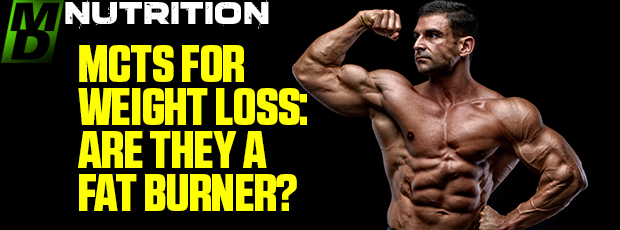Tag: Nutrition

The Mediterranean Diet: Is It Right for You?
There may not be a single diet that’s best for everyone, but if the most common diets had to go head-to-head, the Mediterranean Diet would be a top contender. Year after year, the … Read more
The post The Mediterranean Diet: Is It Right for You? appeared first on BarBend.
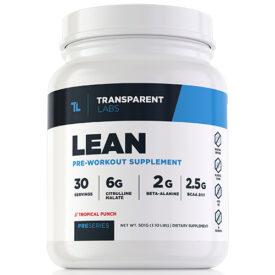
The 9 Best Supplements for Runners of 2023
While supplements for runners won’t replace a proper diet and the right exercise regimen, they can help you whether you’re training for your first 5k or lacing up to qualify for the Boston … Read more
The post The 9 Best Supplements for Runners of 2023 appeared first on BarBend.
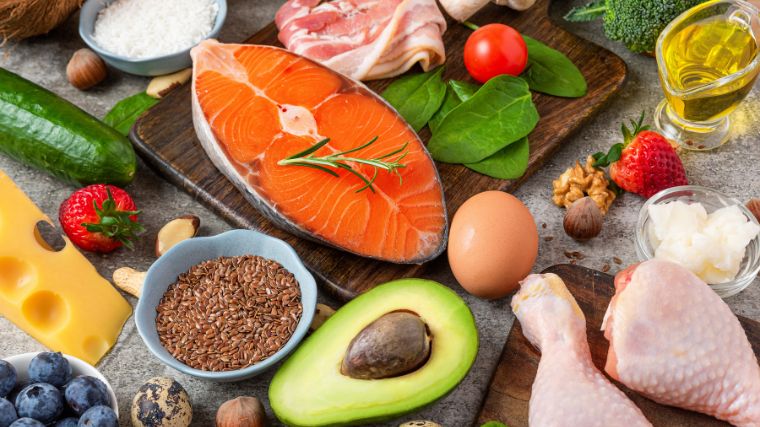
So, What Exactly Is the Keto Diet?
What separates a fad diet from a legitimate nutritional practice? If you’re trying to lose or gain weight, or make any kind of change to your general health habits, it’s a question you … Read more
The post So, What Exactly Is the Keto Diet? appeared first on BarBend.
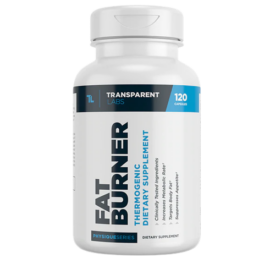
The 10 Best Supplements for Weight Loss of 2023
While not a replacement for a healthy diet and regular exercise, weight loss supplements can give you an extra edge to help you drop those pounds. Whether it’s an appetite suppressant, a thermogenic … Read more
The post The 10 Best Supplements for Weight Loss of 2023 appeared first on BarBend.
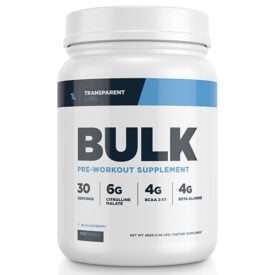
The 9 Best Supplements for Men of 2023
Let’s get this out of the way: No supplement can replace a good diet and an effective workout program. But if you are already eating right and training consistently, a fat burner can … Read more
The post The 9 Best Supplements for Men of 2023 appeared first on BarBend.
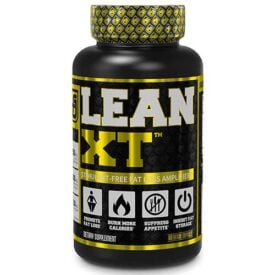
The 9 Best Non-Stimulant Fat Burners for Sleep, Appetite Suppression, and More in 2023
When used judiciously — and we emphasize the word ‘judiciously,’ meaning used in conjunction with a well-planned diet and workout routine — the best non-stimulant fat burners can potentially help in a fat loss journey. Whether you’re … Read more
The post The 9 Best Non-Stimulant Fat Burners for Sleep, Appetite Suppression, and More in 2023 appeared first on BarBend.
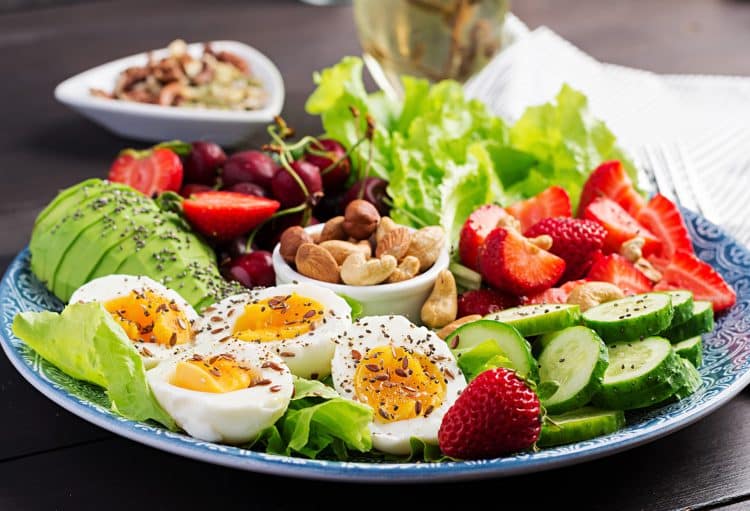
The Ultimate Paleo Diet Food List: What To Devour & Resist
In the 21st century, we find ourselves navigating through a myriad of challenges that pose significant threats to our health and overall well-being. Processed foods, added sugar, unhealthy fats, sedentary lifestyles, smoking, alcohol, allergies, artificial additives, mercury poisoning, the list goes on. The paleo diet is offered as a remedy for this lifestyle.
In this article, we delve into the concept of the paleo diet and present the definitive food list, outlining what to include and exclude from this eating plan.
What is the Paleo Diet?
The paleo diet, short for the Palaeolithic diet, is a dietary approach inspired by the eating habits of humans in the Palaeolithic era. The Palaeolithic era refers to the old stone age, before the advent of human settlement and agricultural practices. This was when our ancestors had just invented stone tools, harpoons, and rafts. This diet is also called the caveman diet or the stone age diet.
During the stone age, early humans were hunter-gatherers. They used their simple stone tools to hunt wild animals. They gathered plants, fruits, insects, etc., from their surroundings.
The paleo diet is a modern-day nutritional plan based on the presumed eating habits of paleolithic humans. It encourages consuming whole, unprocessed foods like lean meats, fish, fruits, vegetables, nuts, and seeds. [1]
Related: Paleo Dieting: A Comprehensive Guide for Beginners]
How Does it Work?
The reasoning behind this eating style is that the modern diet, which is full of processed food and added sugars, has led to various health issues like obesity, diabetes, and other chronic conditions. Proponents believe adopting a paleo diet can prevent these problems. Loren Cordain, a prominent paleo diet advocate, contends that it perfectly matches our genetic makeup. He states that human DNA has remained relatively unchanged over the last 10,000 years, making us more compatible with the diet. According to this perspective, our bodies are ill-equipped to handle the agricultural and heavily processed foods of the modern era, which is thought to contribute to the rise of chronic diseases. [2] [3]
Paleo Diet Ground Rules
Here are the rules to follow while practicing the paleo diet:
Eat high amounts of animal protein.
No cereals, legumes, processed food, dairy products, or refined sugar are allowed.
There is no calorie count.
There is no macronutrient ratio calculation.
This is a low-salt diet.
The three levels of the paleo diet and the 85-15 rule: The paleo diet offers three progressive levels of adherence. In the first level, 85 percent of your food should be paleo-compliant, while the remaining 15 percent can be non-paleo, which comes out to be approximately three meals per week. Level two reduces the non-paleo food to 10 percent, allowing roughly two non-paleo meals each week. Finally, at the highest level, you can only have one cheat meal per week.
Even though weight loss can be achieved through dietary changes alone, incorporating exercise into your routine can be beneficial.
Related: Paleo vs. Keto: Which Diet is Best?
Foods To Eat
Here is a list of foods you can include in your paleo diet:
Meat
Early humans relied on wild animals for sustenance. Raw meat played a vital role in their diet, making it a fundamental part of the paleo diet. However, it’s essential to be cautious when choosing meat. Be wary of feedlot and grain-produced meats, as they come from animals confined in small spaces and fed excessive amounts of grain. Nutritionally, such meat falls far short compared to grass-fed or pasture-produced alternatives.
Processed meats should also be avoided, as they are artificially produced and contain preservatives believed to cause cancer. For the best nutritional value, opt for fresh meat whenever possible. If fresh meat is too pricey, frozen meat can be a viable alternative. However, steer clear of canned or tinned meat altogether. By making informed choices about the meat we consume, we can better align with the principles of the paleo diet and prioritize our overall health.
In his “The Paleo Diet Cookbook,” Cordain listed a vast array of meat choices. Ignore anything that you cannot find locally or makes you squeamish. [4]
Lean meat is a cornerstone of the paleo diet, as it is considered to be more in line with the natural eating habits of our ancestors. You can enjoy lean beef, such as flank steak, top sirloin steak, extra-lean hamburger (with the fat drained off), and London broil. Chuck steak and lean veal are also excellent choices. Lean lamb, including grass-fed lamb chops and roasts, adds a delicious twist to your meals. And if you’re a pork fan, pork loin, pork chops, or any other lean cut.
Poultry lovers can indulge in white meat with the skin removed, like chicken breast, turkey breast, or game hen breast. For adventurous eaters, there’s rabbit, goat meat, and even escargot for a unique culinary experience.
For those who appreciate organ meats, there are tasty options like the liver, tongue, and marrow of beef, lamb, and pork. The paleo diet offers many exotic choices if you’re interested in game meats. You can try alligator or crocodile, bear, bison or buffalo, caribou, elk, emu, frog legs, goose, kangaroo, Muscovy duck, New Zealand Cervena deer, ostrich, pheasant, quail, rattlesnake, reindeer, squab, squirrel, turtle, venison, wild boar, and wild turkey. [4]
Meats
Poultry
Turkey
Chicken breast
Chicken wings
Chicken leg
Goose eggs
Duck eggs
Chicken thigh
Pork
Pork tenderloin
Pork chops
Bacon
Ground pork
Beef
Steak
Grass-fed beef
Ground beef
New York steak
Bison
Bison steaks
Bison jerky
Bison ribeye
Bison sirloin
Beef jerky
Lamb
Lamb rack
Lamb chops
Lean veal
Chuck steak
Seafood
Shrimp
Lobster
Clams
Salmon
Venison steaks
Buffalo
Wild boar
Reindeer
Exotic Meats
Rabbit
Goat
Elk
Emu
Kangaroo
Rattlesnake
Ostrich
Pheasant
Quail
Turtle
Bear
Head Cheese
Related: Find your daily recommend protein intake
Seafood
Seafood is one of the healthiest sources of omega-3 fatty acids and protein. Including it in your diet helps with weight loss.
In the paleo diet, fish and shellfish play a significant role. A variety of fish options are recommended, such as bass, bluefish, cod, drum, eel, flatfish, grouper, haddock, halibut, herring, mackerel, monkfish, mullet, northern pike, orange roughy, perch, red snapper, rockfish, salmon, scrod, shark, striped bass, sunfish, tilapia, trout, tuna, turbot, and walleye. Additionally, any commercially available fish is suitable for the diet.
As for shellfish, there is a delightful range to choose from, including abalone, calamari (squid), crab, crayfish, lobster, mussels, octopus, oysters, scallops, and shrimp. These ocean delights add variety and flavor to the paleo menu, ensuring a diverse and enjoyable eating experience. [4]
Seafood
Fish
Bass
Salmon
Halibut
Mackerel
Sardines
Tuna
Red snapper
Shark
Sunfish
Swordfish
Tilapia
Trout
Walleye
Shellfish
Crab
Crawfish
Crayfish
Shrimp
Clams
Lobsters
Scallops
Oysters
Fish Eggs
Vegetables
Veggies are a nutritional powerhouse packed with essential vitamins, minerals, antioxidants, and fiber. The paleo diet advises against consuming vegetables like sweet potatoes, beets, yams, or squash, which have high starch or carb content, as their nutritional value is comparatively low. Unless you are an athlete needing more energy, limit your intake of such vegetables. It may hinder weight loss.
A wide range of vegetables is encouraged, including:
Green leafy vegetables: Beet greens, collards, dandelion, kale, lettuce, mustard greens, spinach, swiss chard, turnip greens, and watercress.
Root vegetables: Beets, carrots, parsnips, radish, rutabaga, turnips, and yams.
Cruciferous vegetables: Broccoli, Brussels sprouts, cabbage, cauliflower, and kohlrabi.
Gourd and squash: Cucumber, pumpkin, squash, tomatillos, and zucchini.
Other vegetables: Artichoke, asparagus, bell peppers, celery, eggplant, endive, green onions, mushrooms, onions, parsley, peppers, purslane, and seaweed.
Get creative in the kitchen. Include an assortment of vegetables in each meal. They diversify your plate and ensure balanced nutrient intake.
Vegetables
Leafy Greens
Spinach
Kale
Swiss chard
Arugula
Romaine lettuce
Cruciferous
Brussels sprouts
Broccoli
Cauliflower
Cabbage
Root Vegetables
Carrots
Beets
Sweet potato
Yam
Japanese Sweet Potatoes
Other Veggies
Asparagus
Avocado
Artichoke hearts
Zucchini
Celery
Green onions
Peppers (all kinds)
Eggplant
Mushrooms
Butternut squash
Acorn squash
Related: The Ultimate Guide to Pegan Diet
Fruits
Just like vegetables, fruits can help nourish our bodies and minds. While there are no strict restrictions on the types of fruits you can enjoy on the paleo diet, individuals with diabetes or obesity should be cautious about fruits with a high glycemic index and consume them in moderation. To support your health and paleo lifestyle, here’s a list of fruits with increasing levels of total sugar content that you can include in your diet:
Fruits
Citrus
Lime
Lemon
Grapefruit (white and pink)
Tangerine
Orange
Berries
Strawberries
Blueberries
Elderberries
Blackberries
Raspberries
Tropical
Papaya
Guava
Starfruit
Jackfruit
Mamey Apple
Stone Fruits
Plum
Apricot
Peach
Cherries
Other Fruits
Avocado
Tomato
Kiwi
Pear
Casaba melon
Watermelon
Cantaloupe
Pomegranate
Fruits like raisins, dates, dried figs, papaya, prunes, apricots, pears, mango, bananas, grapes, Pineapple, purple passion fruit, etc., have a very high sugar concentration and should be consumed in moderation. [4]
Nuts and Seeds
Nuts and seeds are an excellent addition to the paleo diet, as they contain healthy fats, protein, vitamins, and minerals. They can be enjoyed as a snack, added to salads or various recipes, or used as toppings for dishes, offering flavor and nutritional value to your meals. Here’s the list of nuts and seeds that can be included in the paleo diet:
Nuts: Almonds, Brazil nuts, cashews, chestnuts, hazelnuts (filberts), macadamia nuts, pecans, pistachios (unsalted), and walnuts.
Seeds: Pumpkin seeds, sesame seeds, and sunflower seeds.
Although peanuts are commonly referred to as nuts, they are legumes and cannot be consumed in a paleo diet.
Oils
During the stone age, vegetable or cooking oils were nonexistent. Vegetable oils debuted during the agricultural revolution in the Neolithic period and were mainly used for lighting and heating. Cooking oils entered the culinary practices only a few centuries ago. According to Cordain, the introduction of vegetable oils into our cooking has led to a significant rise in omega-6 fatty acids in our daily diets, which is linked to various health issues such as heart and autoimmune diseases and inflammatory conditions.
However, our bodies still need fat as an essential nutrient to function properly. The following oils can be used in cooking to boost your healthy fat intake:
Flaxseed oil
Walnut oil
Olive oil
Avocado oil
Coconut oil
Related: 11 High-Calorie Low-Carb Foods to Include in your Diet]
Non-Paleo Foods to Eat in Moderation
The paleo diet isn’t overly rigid; it offers some flexibility. You can follow the 85-15 rule, allowing occasional indulgence in non-paleo comfort foods.
When it comes to beverages, you’re free to enjoy diet sodas, coffee, tea, wine, or beer, but moderation is key.
As for sweets, remember that ancient humans had access to only honey as their primary sweetener, but even this should be consumed in moderation. Dried fruits or a mix of dried fruits and nuts are acceptable treats, but if you aim to shed some pounds, it might be best to limit their intake.
Foods To Avoid
You must avoid ‘modern’ foods that were not part of the Palaeolithic era. Cordain suggests adopting the 85-15 rule as a gradual approach to transitioning away from these foods. Here are some foods to avoid:
Dairy: Dairy products, such as milk, cheese, ice cream, powdered milk, and yogurt, should be avoided. Early humans did not domesticate animals and milk them until much later, and in true paleo spirit, they should not be consumed.
Fatty and processed meats: Reduce consumption of processed meats, such as bacon, sausages, and deli meats, as they often contain additives and preservatives.
Grains: Avoid all grains, including barley, millet, rye, sorghum, wheat, rice, oats, and corn, as they were not consumed during the Palaeolithic era. Foods like bread, rolls, muffins, lasagna, etc., made using these grains must be avoided.
Legumes: These are a group of plants that produce seeds in pods. These foods are rich in protein and fiber. They include:
All beans (black beans, green beans, kidney beans, mung beans, etc.)
Lentils
Lupins
Miso
Peanuts and all products made using peanuts (e.g., peanut butter)
Peas (black-eyed peas, chickpeas, snow peas, sugar snap peas)
Soybeans and all soybean products
Salt-containing foods: Salty foods like bacon, cheese, canned meat and fish, salami, ketchup, olives, pickled foods, salted nuts, sausages, etc., should also be avoided.
Starchy vegetables: White potatoes, corn, and peas.
Soft drinks and sugary beverages: Cut back on sugary beverages, including soft drinks, fruit juices, and energy drinks.
Sugar and artificial sweeteners: Minimize or eliminate added sugars, including refined and artificial sweeteners. Even honey should be consumed in moderation.
Vegetable oils: Refrain from using vegetable oils like soybean, sunflower, and canola oil in cooking or as a primary fat source.
Remember, the paleo diet focuses on whole, unprocessed, nutrient-dense foods that our ancestors would have consumed during the palaeolithic era. Avoiding these modern processed foods will lead to more wholesome and nourishing dietary habits. [4]
FAQs
Why are legumes not allowed in the Paleo diet?
In the paleo diet, legumes are excluded due to the presence of anti-nutrients like lectins and phytates, which can interfere with nutrient absorption and digestion. While legumes have some health benefits, they are not included in the paleo eating plan to ensure better nutrient absorption and adherence to the diet principles.
What are whole foods?
Whole foods are unprocessed or minimally processed foods that are in their natural state, free from additives, and rich in nutrients.
Can I have eggs on a Paleo diet?
Yes, eggs are allowed on the paleo diet and are considered a staple. For a more paleo-compliant option, organic eggs from cage-free birds are preferable over store-bought ones, as they align better with the principles of the paleo diet.
What are the benefits of a Paleo diet?
The paleo diet is renowned for its abundant protein, fiber, and antioxidants while keeping carbs, sodium, sugar, and processed foods in check. It is believed to positively affect cholesterol, blood pressure, and inflammation, promoting weight loss, better blood sugar management, improved sleep, and increased energy levels. [5] [6] [7] [8]
What are the potential side effects of the paleo diet?
Eliminating whole grains, dairy, and legumes can lead to calcium, vitamin D, and B vitamins deficiencies. For vegans, excluding legumes may result in a lack of a primary protein source. Additionally, a sudden increase in fiber intake can lead to gastric problems. [9]
Conclusion
While the paleo diet has gained traction, it has its fair share of critics. Some nutrition experts argue it can be restrictive, omitting certain nutritious food groups like whole grains and legumes. Another contention is that replicating the exact diet of Palaeolithic humans is not optimal, as their eating habits varied vastly depending on where they lived and what was available. Maybe they never had chronic diseases because they never lived long enough to have them. Opinions and studies provide conflicting views about this. [10]
It is wise to consult a healthcare professional or a registered dietitian before starting a new eating plan. They can help you tailor the diet to your health needs and goals.
References
Challa HJ, Bandlamudi M, Uppaluri KR. Paleolithic Diet. [Updated 2022 Jul 4]. In: StatPearls [Internet]. Treasure Island (FL): StatPearls Publishing; 2023 Jan.
Obert, J., Pearlman, M., Obert, L., & Chapin, S. (2017, November 9). Popular Weight Loss Strategies: a Review of Four Weight Loss Techniques. Current Gastroenterology Reports, 19(12).
Gibbons, Ann. (n.d.). The Evolution of Diet. National Geographic.
Stephenson, N., & Cordain, L. (2013, February 21). The Paleo Diet Cookbook: More Than 150 Recipes for Paleo Breakfasts, Lunches, Dinners, Snacks, and Beverages. Harvest.
Jönsson, T., Granfeldt, Y., Ahrén, B., Branell, U. C., Pålsson, G., Hansson, A., Söderström, M., & Lindeberg, S. (2009). Beneficial effects of a Paleolithic diet on cardiovascular risk factors in type 2 diabetes: a randomized cross-over pilot study. Cardiovascular Diabetology, 8(1), 35.
Steigleder, K. M., Dias, C. B., Ferreira, M. M., & Leal, R. F. (2023). Disease risk and inflammation-associated diets. Natural Plant Products in Inflammatory Bowel Diseases, 71–85.
Frassetto, L. A., Schloetter, M., Mietus-Synder, M., Morris, R. C., & Sebastian, A. (2009, February 11). Metabolic and physiologic improvements from consuming a paleolithic, hunter-gatherer type diet. European Journal of Clinical Nutrition, 63(8), 947–955.
Lindeberg, S., Jönsson, T., Granfeldt, Y., Borgstrand, E., Soffman, J., Sjöström, K., & Ahrén, B. (2007, June 22). A Palaeolithic diet improves glucose tolerance more than a Mediterranean-like diet in individuals with ischaemic heart disease. Diabetologia, 50(9), 1795–1807.
Gunnar, K. & Kelly, E. (2023, March 16). The Paleo Diet — A Beginner’s Guide + Meal Plan. HealthLine.
Butler, Stephanie. (2023, May 17). Going Paleo: What Prehistoric Man Actually Ate. HISTORY.

Core Workouts To Develop Abdominal Muscles
A strong, chiseled midsection with well-defined abs is a fitness goal that many aspire to achieve. Beyond the aesthetics, a strong core offers many benefits, from improved posture and reduced risk of injury to enhanced athletic performance and functional fitness. However, building a solid midsection requires a focused approach that combines targeted core workouts, […]
The post Core Workouts To Develop Abdominal Muscles first appeared on .
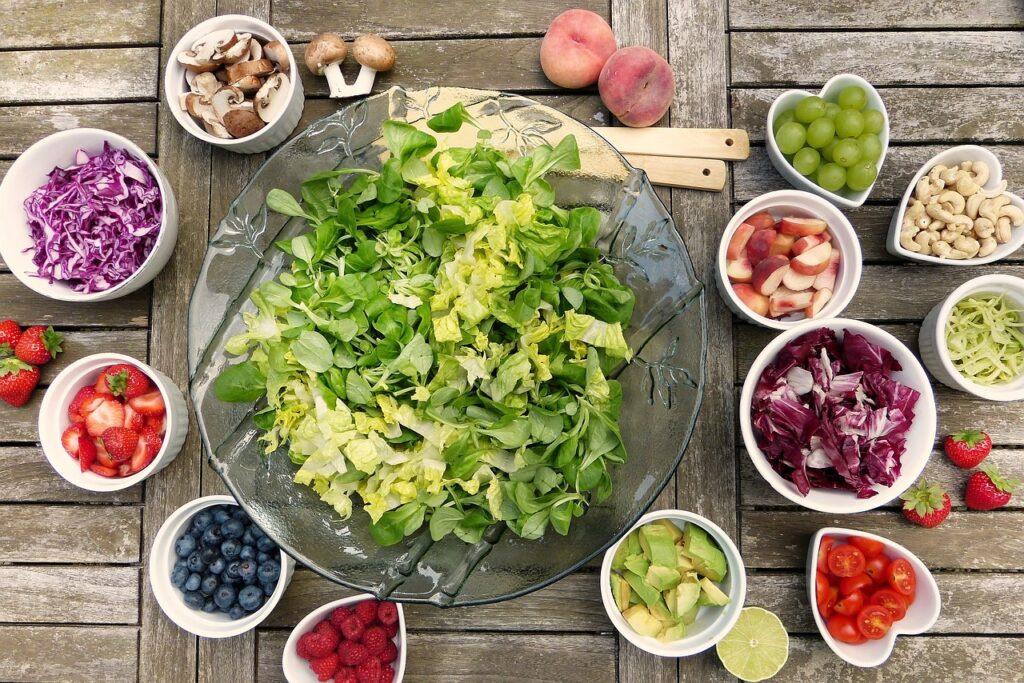
Nutritional Supplements: What to Take and Why
This article will explore the fundamentals of nutritional supplements and why incorporating them into your daily routine is beneficial. What are Nutritional Supplements? Nutritional supplements refer to products designed to enhance one’s diet and commonly consist of vitamins, herbs, minerals, and amino acids. These supplements are frequently linked to complementary and alternative medicine […]
The post Nutritional Supplements: What to Take and Why first appeared on .

